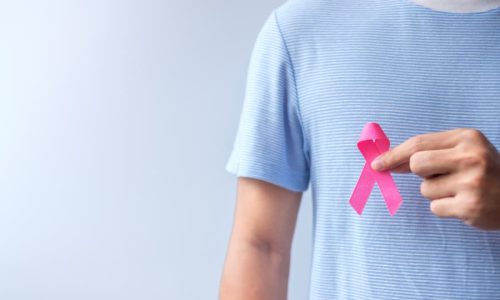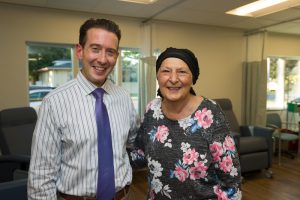
Early Signs of Inflammatory Breast Cancer
Regional Cancer Care Associates (RCCA) provides comprehensive treatment of cancer and blood disorders to patients throughout New Jersey, Connecticut, and the Washington, DC, area. Here,
HIPAA Alert: Potential Data Breach Learn More
Questions on Oncology, Hematology and/or Infusion Clinical Services due to COVID-19 Crisis – CALL 833-698-1623
Important Information for Our Patients Regarding the Coronavirus.
RCCA Providing Area Cancer Patients with Access to Care During Coronavirus Outbreak
RCCA Offering Patients Virtual Visits During Coronavirus Pandemic

Breast cancer is a disease that begins in the cells of the breast and that causes these cells to grow out of control. The breast has different parts, and there are different types of breast cancer. The type depends on where in the breast the cancer cells have developed. Parts of the breast and their corresponding cancers include:
Breast cancer can also be classified based on whether or not it has spread. In situ breast cancer is a pre-invasive growth that starts in a milk duct and hasn’t spread outside of the breast tissue. The most common type of in situ breast cancer is ductal carcinoma in situ.
Invasive breast cancers are breast cancers that have spread into the surrounding tissue. Invasive ductal carcinoma and invasive lobular carcinoma are the most common types of invasive breast cancer. Invasive ductal carcinoma accounts for around 70 to 80 percent of all breast cancers.
There is a common misconception that men can’t get breast cancer. In fact, they can. Although breast cancer is far more common in women, it can also affect men. According to the Centers for Disease Control and Prevention (CDC), about one percent of breast cancers diagnosed in the US are in men. In men, breast cancer usually forms in the small amount of breast tissue behind the nipples. It is most often diagnosed in men over age 60, but it can also afflict younger men. There are two main types of breast cancer in men:
Men can also get rarer forms of breast cancer, such as Paget’s disease of the nipple and inflammatory breast cancer, but these are much less common. The treatment and outlook for breast cancer in men depends on the type of cancer, the stage of cancer, and other factors, such as the man’s age and any other medical conditions he may have. At Regional Cancer Care Associates, we offer cancer care support throughout the treatment process for men, women, and families affected by cancer.
Many people are familiar with the symptoms of breast cancer in women; those signs are not too different in men. Symptoms often include changes in the appearance of the breast or feeling lumps or other irregularities, including:
Because men have less tissue in their breasts, they may be able to feel a lump more easily than women. Several of these symptoms can be caused by other health problems, but men should not ignore them, especially if they’re prolonged. Men who are experiencing symptoms of breast cancer should schedule an appointment with their doctor to get examined and referred for further tests, if needed.
The causes of breast cancer in both women and men aren’t fully known, but there are risk factors that can increase a person’s chance of developing the disease. Risk factors for men developing breast cancer include:
Other factors that may be associated with an increased risk of breast cancer in males are heavy alcohol intake and obesity. Although a person may have risk factors, that doesn’t mean he or she will get the disease. Likewise, some people can have no risk factors and still develop breast cancer.
When men have symptoms of breast cancer and visit a primary care doctor, they’ll be given an examination of their breasts and nearby lymph nodes. If a physical exam finds anything concerning, a doctor may schedule one or more diagnostic tests, such as:
A mammogram is a low-dose X-ray used to identify any lumps or abnormalities in the breast tissue. During a mammogram, the breasts are gently compressed between two plates attached to an X-ray machine. The breasts are flattened, and many two-dimensional images of the breasts are taken for the doctor to review. If a man has very little breast tissue, a mammogram can be difficult to perform, but other test options are available.
Ultrasound is a technology that uses sound waves to create images of the breasts. These images can provide more insight into masses found during mammograms or physical exams, such as determining whether a mass is solid or filled with fluid. If a mass is solid, it may need further testing, such as a biopsy, to determine whether it is cancerous.
A biopsy is a procedure in which a sample of tissue is removed to test whether it is cancerous. A core needle biopsy is the most common type of biopsy used to diagnose breast cancer. It uses a wide, hollow needle to remove several small pieces of breast tissue from the suspicious area so they can be tested in a lab.
A fine needle aspiration (FNA) biopsy is often used to determine whether breast cancer has spread to nearby lymph nodes. Using a thin, hollow needle attached to a syringe, the doctor will take a small amount of tissue and test it to see whether it contains cancerous cells. This type of biopsy is easier, but it isn’t as precise as a core needle biopsy.
Please note: Regional Cancer Care Associates is not involved with the initial identification, screening, and evaluation of possible breast cancer. We accept referrals from physicians after patients have been diagnosed to provide them with high-quality cancer treatment close to home. We also offer second opinions on diagnoses and treatment plans, if needed.
Once a man has a confirmed breast cancer diagnosis, he can discuss treatment options with his oncologist and medical team to decide on the best option for his case. Possible treatments include:
Often, oncologists may recommend one or more treatments to offer the best possible outcome and to prevent the cancer from recurring. The success of treatment and the outlook for breast cancer in men depends in large part on how far the cancer has spread before diagnosis.
Regional Cancer Care Associates was founded in 2012 with the merger of ten separate oncology practices. The oncology network has grown even further since then. Our mission is to provide patients with world-class medical care close to home, at our more than 20 locations throughout New Jersey, Connecticut, Massachusetts, and the Washington, D.C., area.
We’re committed to offering comprehensive medical care, from cutting-edge therapies and innovative treatments to clinical trials. At Regional Cancer Care Associates, we serve more than 26,000 new patients annually, as patients trust in the high-quality care we provide. There are numerous reasons why patients choose to get cancer care at our facilities, including:
These are just a few of the reasons why patients come to Regional Cancer Care Associates for their cancer treatment and other medical care.
Men diagnosed with breast cancer can experience shame, stigma, and loneliness, but working with a dedicated medical team can help you choose the best possible treatment option and address any accompanying emotional issues. If you or a loved one has recently been diagnosed with male breast cancer, consider getting your cancer treatment at Regional Cancer Care Associates.
With more than twenty locations throughout New Jersey, Connecticut, Massachusetts, and the Washington, D.C., area, Regional Cancer Care Associates is the place to go for world-class cancer care, patient support, and caregiver education. Contact us today to schedule an appointment.
For more information or to schedule an appointment,
call 844-346-7222. You can also schedule an appointment by calling the RCCA location nearest you.

Regional Cancer Care Associates (RCCA) provides comprehensive treatment of cancer and blood disorders to patients throughout New Jersey, Connecticut, and the Washington, DC, area. Here,

First diagnosed with breast cancer in 1992, she has persevered in her battle against the disease for more than 30 years.

Regional Cancer Care Associates is proud to announce that Jumana Chatiwala, MD, a board-certified hematologist and oncologist with the Sparta Division, will be honored by the American Cancer Society at the annual Diamond Ball Gala in November.

Regional Cancer Care Associates is one of fewer than 200 medical practices in the country selected to participate in the Oncology Care Model (OCM); a recent Medicare initiative aimed at improving care coordination and access to and quality of care for Medicare beneficiaries undergoing chemotherapy treatment.